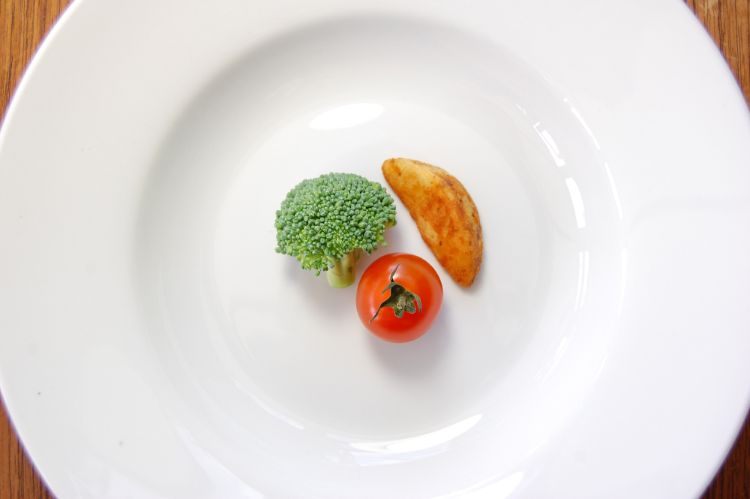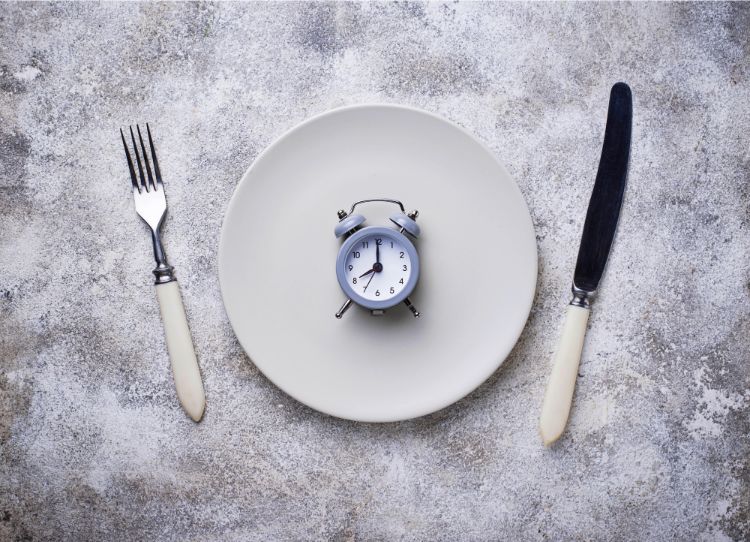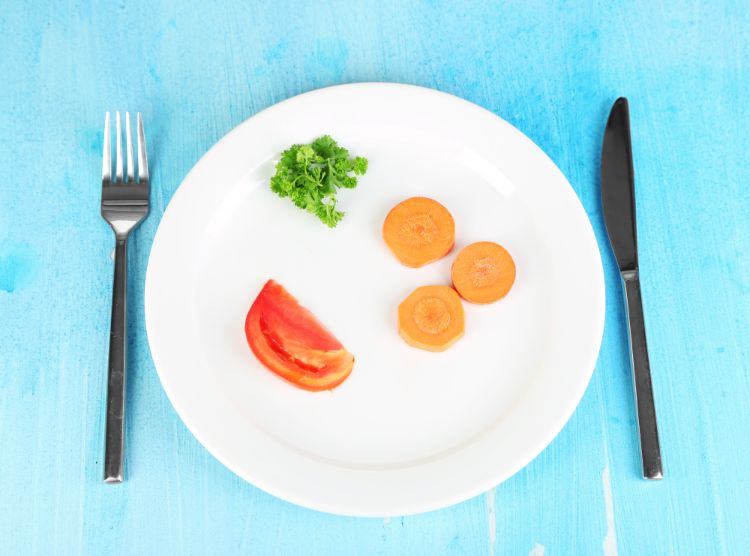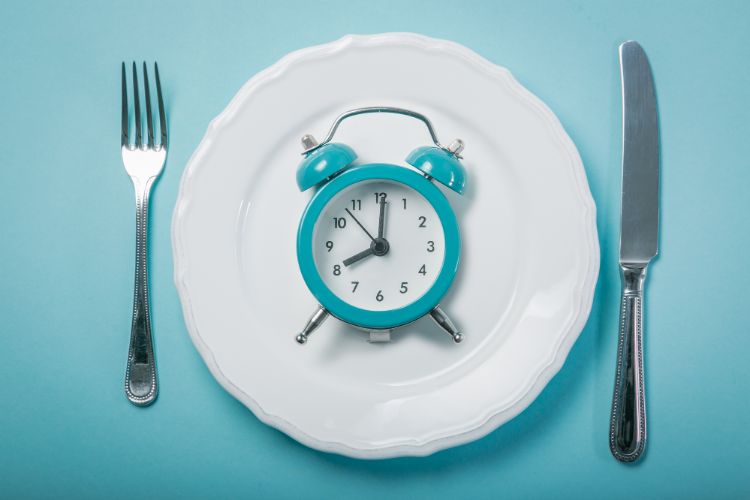Which is more lost during periodic fasting: muscle or fat?
Studies confirm that fasting, especially interval fasting, effectively reduces overall body weight. But what exactly causes this decrease – muscle or fat – most studies do not specify. Let's try to figure it out.
Content
What is lost: fat or muscle?

Unfortunately, almost all scientific studies conducted that studied the effect of periodic fasting on the human body recorded only General weight loss . The evidence base regarding the effect on muscle tissue is extremely scarce.
Only one study in the USA found that in 3-12 months of periodic fasting (with normal physical exertion), muscle mass can decrease by an average of 1 kg.
And here are other works of scientists demonstrate that there is no loss of muscle mass with a competent approach to fasting.
Thus, this issue remains controversial.
Is known that systematic physical activity is needed to grow and preserve muscles. Therefore, in its absence, against the background of cyclic starvation, loss of muscle tissue is more likely to be noted.
Is it possible to gain muscle mass by starving?

Intermittent fasting has many advantages , however , gaining muscle mass is definitely not one of them.
As you know, for muscle growth, it is necessary that the caloric content of the diet significantly exceeds the energy consumption. Also, the diet should be rich in protein.
Most fasting protocols do not allow the body to get enough calories to increase muscle. Many protocols, on the contrary, involve the use of low-calorie foods, which develop a rapid feeling of satiety (fresh vegetables and fruits).
However, it is possible to significantly reduce the risk of loss of existing muscle mass. One of the international studies shows that muscle preservation is possible if periodic abstinence from food is combined with regular strength training. Also scientists recommend regularly include protein products in the diet, their content should be evenly distributed throughout the day.
At the same time, periodic fasting is great for &171;drying &187; in bodybuilding, as it effectively burns fat. To &171;dry&187;, you can use the popular Fasting protocol 16/8 .
How not to lose muscles – 4 main rules
There are several rules that compliance with which will help to preserve (and possibly increase) muscles during cyclic fasting. This mainly concerns nutrition and physical activity.
Here are the 4 most significant recommendations.
1. Exercise regularly
 Muscle work is a key mechanism for increasing their volume. Only with regular physical exertion (exceeding daily strength) will there be an increase in muscle tissue.
Muscle work is a key mechanism for increasing their volume. Only with regular physical exertion (exceeding daily strength) will there be an increase in muscle tissue.
The lack of systematic training leads to gradual atrophy of muscle tissue due to their shutdown from work.
2. Lose weight slowly
 Australian Experts installed
that the high rate of body weight loss ("aggressive diets") leads to a rapid decrease not only in fat reserves, but also in the volume of muscle tissue.
Australian Experts installed
that the high rate of body weight loss ("aggressive diets") leads to a rapid decrease not only in fat reserves, but also in the volume of muscle tissue.
In order to preserve muscles recommended reduce body weight by no more than 450-900 grams per week, while it is better to stick to the lower limit.
Drastic weight loss creates a stressful situation for the body, in which the metabolism changes dramatically. This phenomenon leads to a lack of muscle tissue growth even with excessive protein content in the diet.
3. Eat more protein
 Proteins (mainly of animal origin) are the main building material. It is from them that the body synthesizes new components of muscle tissue.
Proteins (mainly of animal origin) are the main building material. It is from them that the body synthesizes new components of muscle tissue.
Proteins are also necessary for the synthesis of a large number of enzymes involved in the synthesis of new muscle fibers and hyperplasia of existing ones.
According to American scientists , increased protein intake during interval fasting will help preserve muscles during the breakdown of body fat.
The minimum protein requirement per day is 1.6 grams per kilogram of body weight.
4. Consider taking food supplements
 There are two main types of supplements needed to increase the volume of muscle tissue – these are proteins (amino acids) and creatine.
There are two main types of supplements needed to increase the volume of muscle tissue – these are proteins (amino acids) and creatine.
Proteins not only increase the mass of muscle tissue, but also contribute to increased muscle performance.
Creatine is a special acid that is naturally found in the human body. It is necessary to maintain energy metabolism in all cells of muscle tissue.
Inclusion of creatine in the diet, according to scientists , increases muscle strength and volume by about 5-10%.
How to exercise while fasting?
 Studies demonstrate that regular physical activity stimulates the growth of muscle tissue, which allows you to preserve muscles while reducing total body weight.
Studies demonstrate that regular physical activity stimulates the growth of muscle tissue, which allows you to preserve muscles while reducing total body weight.
The recommended frequency and duration of training is 3-5 days a week for 50-60 minutes.
It is important that physical activity is feasible, otherwise complications from the musculoskeletal system, cardiovascular and respiratory systems may develop. It is recommended to consult a doctor beforehand.
As an example, we can give one of the American studies . They found that exercising on an exercise bike for 25-40 minutes 3 times a week prevents loss of muscle tissue against the background of short-term starvation.
Conclusion
- Thus, cyclic fasting can cause a slight loss of muscle mass.
- It is important to understand that gaining muscle mass during fasting is almost impossible, the main goal of efforts is to preserve it.
- In order to preserve muscles, it is recommended to expose the body to regular physical exertion and increase the protein content in the diet.





